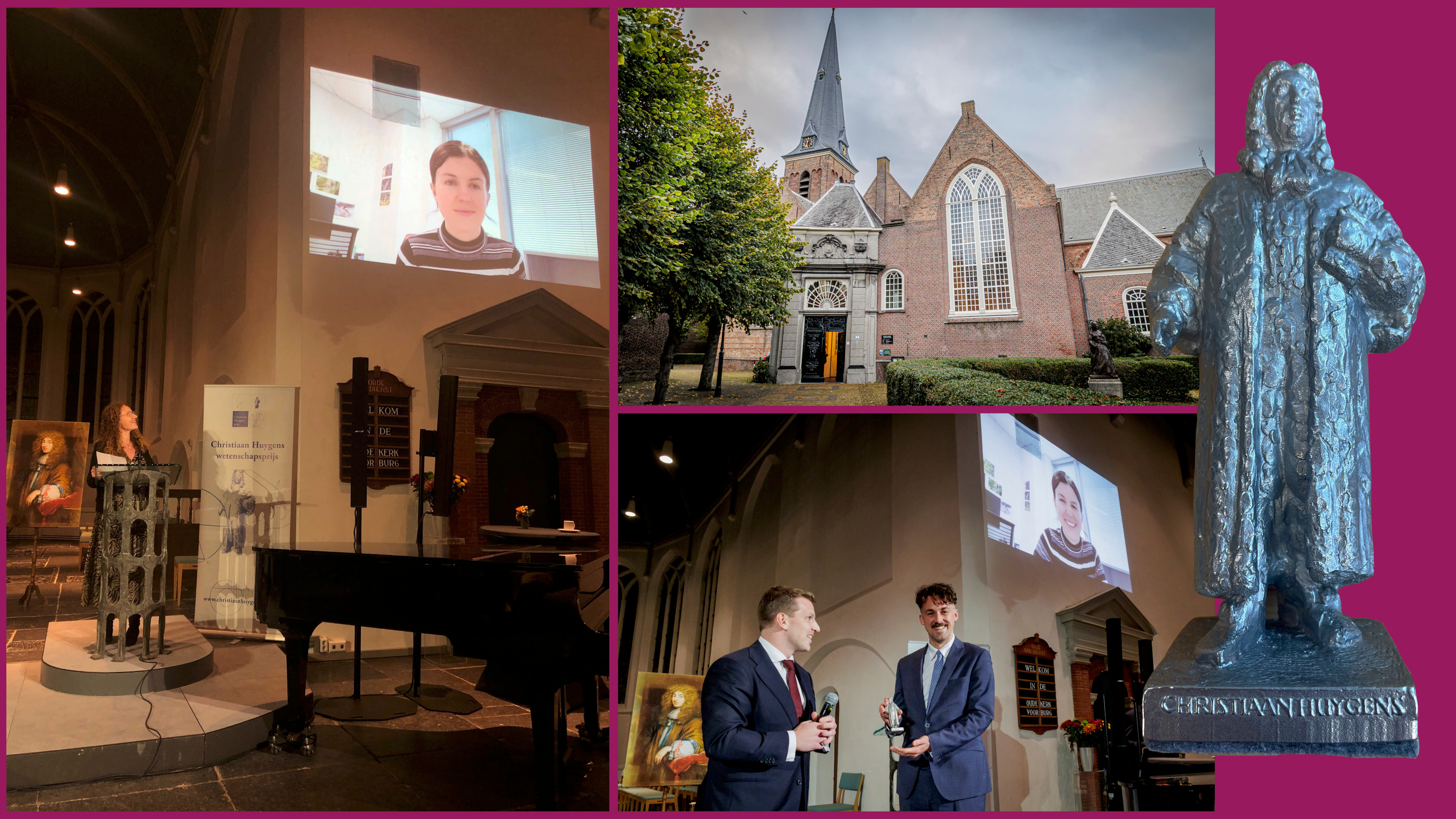Daily image
 © ASTRON/Paul Voorham
© ASTRON/Paul Voorham
There were also two honourable mentions awarded, one to Pavel Mancera Piña (RUG/ASTRON) for his thesis "Dark matter and angular momentum in nearby disc galaxies" and the other to former ASTRON/UvA PhD candidate Kenzie Nimmo for her thesis "Zooming-in on the sources of fast radio transients". In fact, all three awardees did a PhD on radio astronomy!
The awards were given out by Gouke Moes (Minister van Onderwijs, Cultuur en Wetenschap) and the prize committee chair Amina Helmi in a festive ceremony at the Oude Kerk in Voorburg. Because Kenzie was not able to travel to the Netherlands, and I was in South Africa for a MeerKAT review, Ziggy Pleunis and Omar Ould-Boukattine were there to accept the trophy and certificate on her behalf, and on behalf of our AstroFlash research group.
Gefeliciteerd, Kenzie!